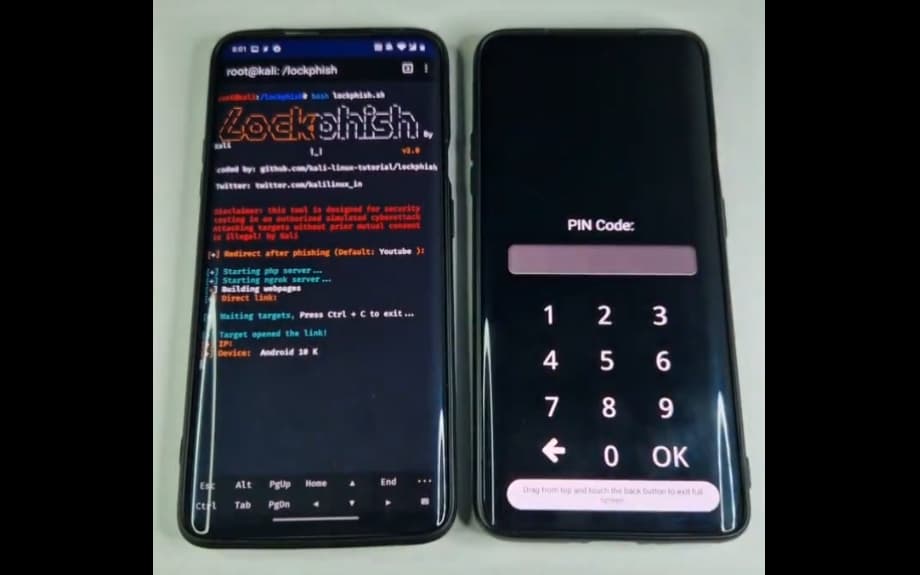
Through phishing, someone can obtain your username and password for social networks, bank accounts, etc., but also the unlock code for your cell phone or computer. This is not that difficult, since there are tools like LockPish that allow you to do this relatively easily..
Pishing is when someone tries to impersonate another person or institution, usually through emails. If you have received suspicious emails from your bank requesting your username and password to access your bank account, or your Facebook login, you will know what I am talking about. The email appears to be authentic, but the sender or the URLs it redirects you to are fake. When you enter those web addresses and put your data there, you have already been hacked.
Editor Recommended:
- How should you proceed when your cell phone is stolen or lost?
- How to track a OFF cell phone Android or iPhone: This is the trick
- Can viruses be transferred from PC to cell phone?
To obtain the unlock code for your cell phone, the thief or person who stole your phone can use tools like LockPish to try to obtain the PIN for your lock screen. Basically it could send you a fake email, with some convincing text and a web address, which if you click on it will show you an unlock screen identical to the one on your cell phone. If you enter your Android PIN, iPhone unlock code, or Windows PIN there, the thief will have obtained this code remotely and will be able to access your device..
Don't think this is as difficult as it sounds. Tools like LockPhish only require the hacker to have a Linux PC and install this software there with a couple of text commands. The setup is just as similar and once that's done, they just have to find your email to send you the bait. LockPish can even be run from another mobile device, under certain conditions.
If you don't pay close attention to the sender address of the emails you receive, or the URL to which you will be redirected when you click, you could end up giving your phone's access code directly to the thief of your device. I've never seen clicking a link on Android, iPhone, or Windows to skip the device's lock screen , so this may be another thing to watch out for..